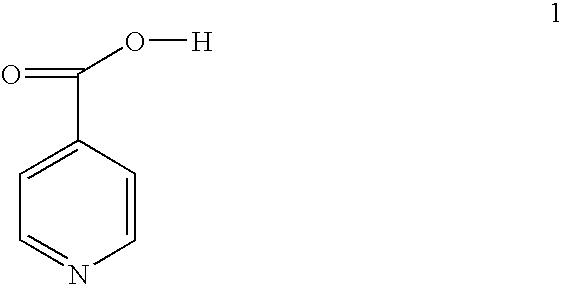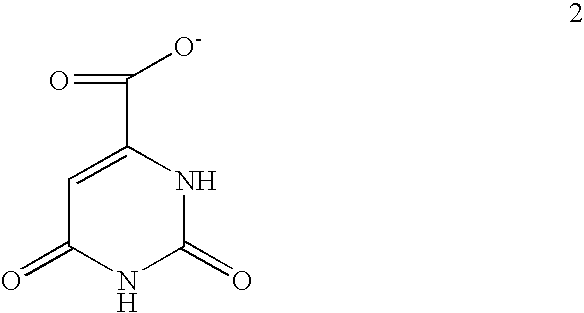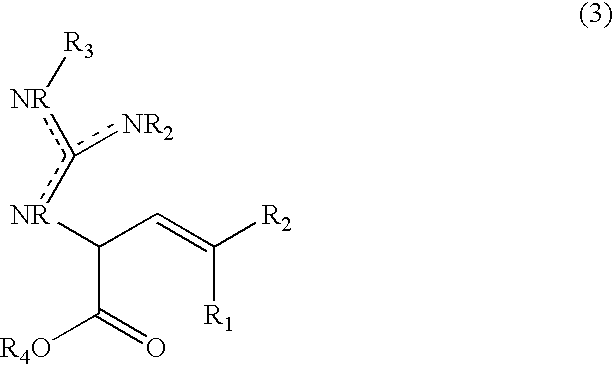Compositions and methods for treating amyotrophic lateral sclerosis (ALS)
a technology amyloid disease, which is applied in the field of amyotrophic lateral sclerosis compositions and methods, can solve the problems of amyloid disease cell death and motor neuron death that are still under investigation
- Summary
- Abstract
- Description
- Claims
- Application Information
AI Technical Summary
Benefits of technology
Problems solved by technology
Method used
Image
Examples
example 1
Cys 111 is involved in Oxidative Damage-induced Aggregation of SOD
[0124] This experiments shows that Cys 111 is involved in the oxidative damage-induced aggregation of SOD. Wild type SOD and three pathogenic mutants (A4V, G37R and G85R) were used in the experiment. Mean survival associated with A4V, G85R and G37R are 1, 6 and 18 years, respectively. The sulfur of Cys 111 was blocked with various sulfhydryl-blocking reagents, such as iodoacetate and dithionitro benzoic acid (DTNB). Iodoacetate treatments of proteins with exposed Cysteines results in the acetylation of sulfhydryl groups. DTNB selectively attacks accessible sulfhydryl groups in proteins and attaches one 2-nitrobenzoate group to the exposed Cysteine via a disulfide bond.
[0125] SOD expression and purification. The SOD expression vectors were a gift from Joseph Beckman (Oregon State University). The SOD cDNA was cloned into a PET21 vector between the BAMHI and NcoI sites and transformed into Escherichia coli strain BL21...
example 2
Model for SOD Aggregation
[0132] Recent advances in the studies of SOD aggregation have suggested the involvement of monomeric intermediate (Ray, S. S., et al., Biochemistry 43, 4899-4905 (2004), Rakhit, R., et al., J. Biol. Chem. (2004) and Khare, S. D., et al., Proc. Natl. Acad. Sci. USA 101, 15094-9 (2004)) and the loss of the metal cofactors (Khare et al. supra) as the critical events leading to the aggregation of SOD. On the contrary, suggestions of dimeric intermediates in the process of aggregation were also made (DiDonato, M., et al., J. Mol. Biol. 332, 601-15 (2003) and Hough, M. A., et al., Proc. Natl. Acad. Sci. USA 101, 5976-81 (2004)). Specifically, Hough and colleagues reported significant distortions in the dimeric conformation of A4V and I113T mutants, which could only be observed in solutions (Hough et al. supra). Briefly, Hough et al compared the crystal structures of WT, A4V and I113T mutant SOD with those observed in solution using small angle X-ray scattering (S...
example 3
Inhibitory Effect of Orotic Acid on the Aggregation of SOD In Vitro
[0165] The scope of the current study that led to the discovery of anti-aggregation effect of orotate was based the inventor's aggregation model involving the open dimers (FIG. 9) as discussed in Example 2. Thus, the inventor's experimental evidence suggesting the inhibition of in vitro oxidative aggregation provides supports for the proposed mechanism of aggregation. The subtle observation that orotate showed different level of anti-aggregation activity in different variants of SOD with different extent of dimer opening suggests that the aggregation inhibition is dependent on the organization of the Cys111 crevice. Taken together, these inhibition data suggest binding of orotate to the critical region of the Cys111 crevice, and the resulting inhibition of oxidative aggregation in vitro.
[0166] Orotate is characterized by its numerous sites for potential hydrogen bonding (Formula 2), which may be deemed as a sign of...
PUM
| Property | Measurement | Unit |
|---|---|---|
| Molar mass | aaaaa | aaaaa |
| Molar mass | aaaaa | aaaaa |
| Composition | aaaaa | aaaaa |
Abstract
Description
Claims
Application Information
 Login to View More
Login to View More - R&D
- Intellectual Property
- Life Sciences
- Materials
- Tech Scout
- Unparalleled Data Quality
- Higher Quality Content
- 60% Fewer Hallucinations
Browse by: Latest US Patents, China's latest patents, Technical Efficacy Thesaurus, Application Domain, Technology Topic, Popular Technical Reports.
© 2025 PatSnap. All rights reserved.Legal|Privacy policy|Modern Slavery Act Transparency Statement|Sitemap|About US| Contact US: help@patsnap.com



